Photos: Milan furniture fair 2011
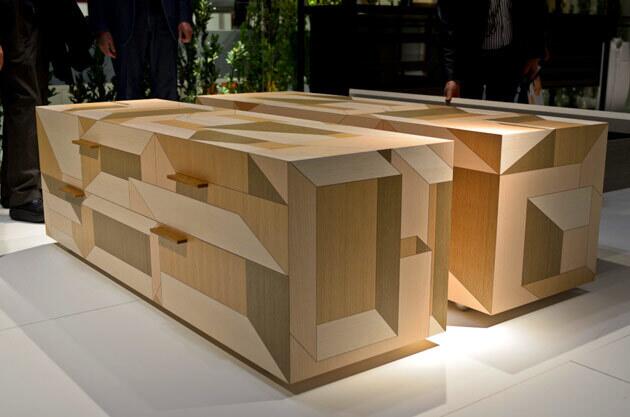
The Swedish design studio Front created a gorgeous geometric puzzle across a new chest of drawers and an armoire using oak inlays in four shades. The design, to be produced by Porro, looked angular and yet soft. The play of the wood grain added some complexity, and the offset position of drawer pulls added a sense of irreverence. (Franco Forci / For The Times)
Photos: Milan furniture fair 2011
Check out photos from the Milan furniture fair, a design frenzythat dwarfs this city’s famed fashion week in size.
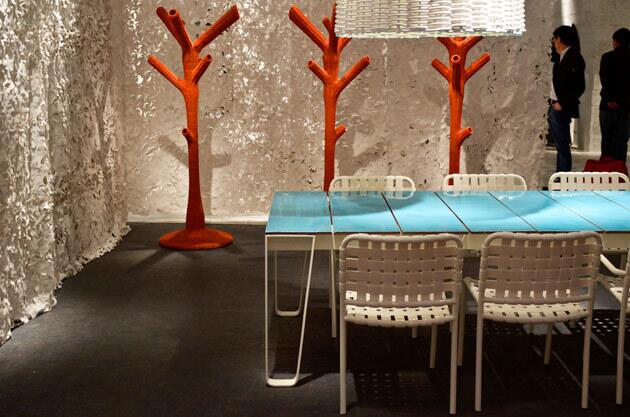
Gervasoni named its new collection InOut and declared every table, chair, sofa and chaise to be worthy of living room or deck. The Paola Navone designs do blur the line well, and as staged in the company’s Milan furniture fair booth, a dining table seemed as plausible in a breakfast nook as on the patio. Giant turquoise ceramic slats sit atop an aluminum frame painted white. (Franco Forci / For The Times)
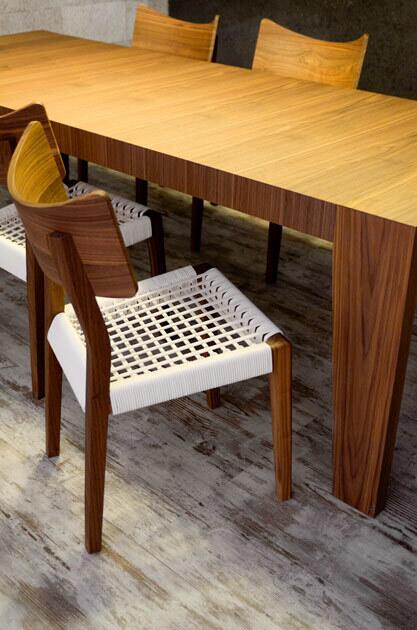
After designers spent years creating outdoor interpretations of indoor furniture, more appear to be moving in the opposite direction, creating interior pieces that feel inspired by backyard living. Although designer Paola Navone’s Sweet dining chairs can be finished with a brown leather seat, Gervasoni exhibited the walnut frames with white PVC cord. (Franco Forci / For The Times)
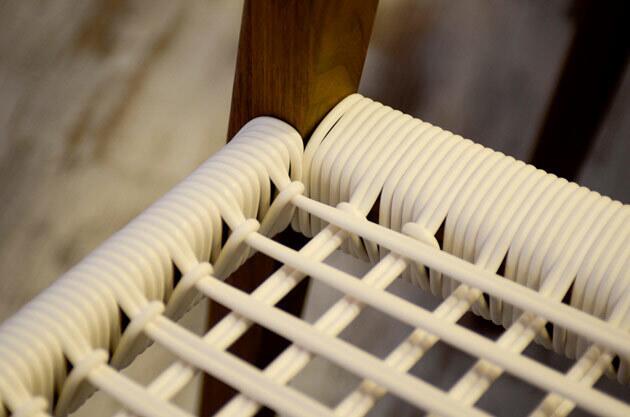
Detail of the chairs designed by Navone for Gervasoni. (Franco Forci / For The Times)
Advertisement
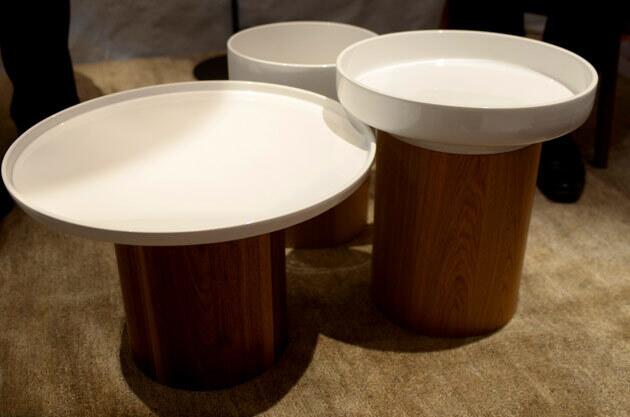
German manufacturer Zeitraum’s Apu side tables were grouped to form a sort of topographic coffee tables. The white ceramic tops lift off. The wide piece at left, for example, could be brought to the kitchen and used as a platter for entertaining, while the deep piece in the rear could be used as a planter. The oak bases are hollow, providing a bit of hidden storage. (Franco Forci / For The Times)
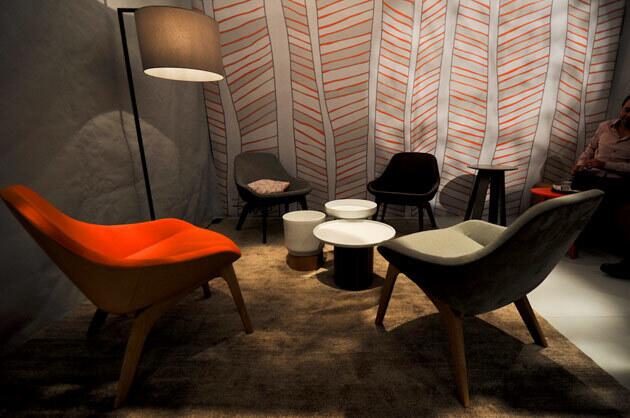
The Apu side tables are surrounded by Zeitraum’s new Morph lounge chairs, whose oak legs supported a leather-backed seat upholstered in front in a range of warm fabrics. (Franco Forci / For The Times)
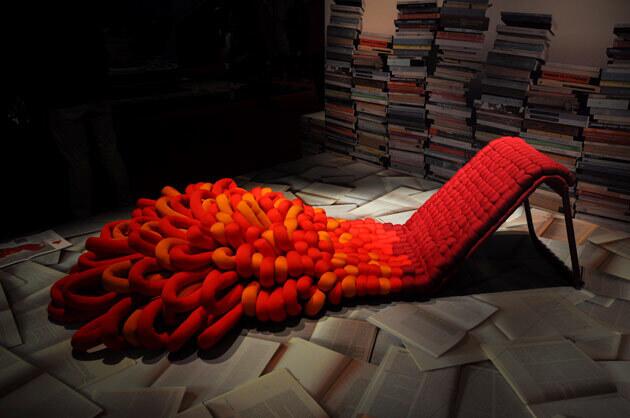
Casamania showed Loop by Sophie de Vocht, a design student awaiting graduation this spring. De Vocht said she wanted to create a piece with the same kind of tufting technique used in making carpets. Special equipment allowed her to loop material through a lattice-like structure, the knitted stocking-like material gradually becoming looser as it flows toward the feet. The designer said she wanted the piece to sit close to the ground — a nod to the carpet-making technique used to create the chair. (Franco Forci / For The Times)
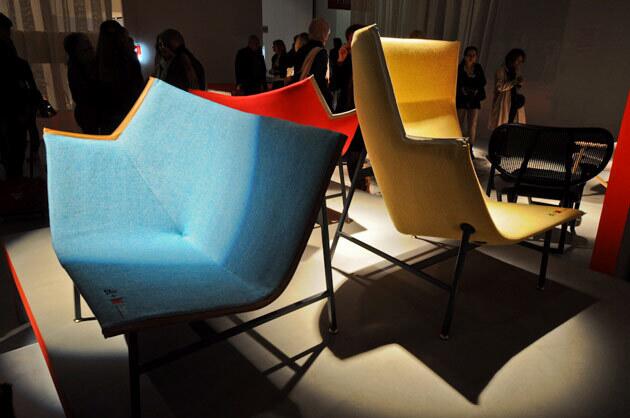
Many companies showed off refinements to furniture that premiered last year. At the Moroso booth, the Paper Planes chairs that were shown in busy, highly graphic upholstery adorned with miniature crystals in 2010 were back on display, this time in solid colors minus the bling. The lack of decoration left the emphasis purely on the modern high-back silhouette, which is ultimately what makes the chair noteworthy anyway. (Franco Forci / For The Times)
Advertisement
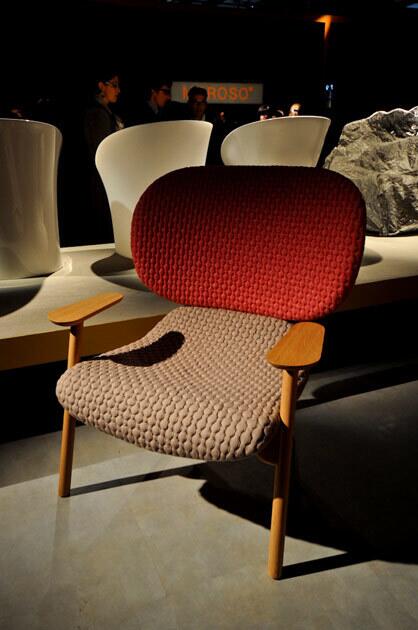
The ecstatic palettes that punctuated 2010 collections have been subdued for 2011. Patricia Urquiola’s Klara chair, shown last year in the Moroso booth with vibrant red armrests and a bright blue seat, was shown this year in a subdued, cranberry-colored backrest and putty seat -- both with comfy, quilted finish. (Franco Forci / For The Times)
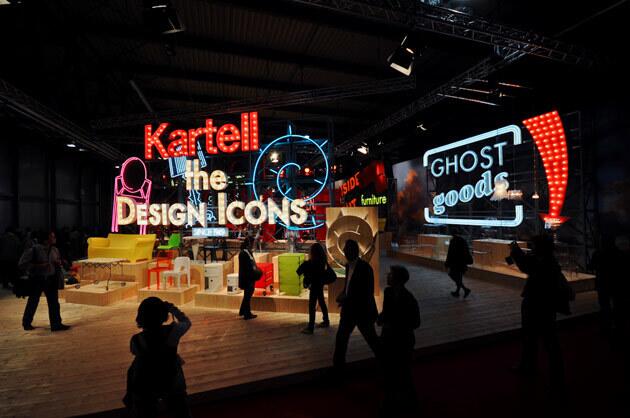
Kartell usually sparkles at the fair, and this year was no exception. The Italian firm that turned plastic furniture into an art lighted up a huge corner with neon displays showcasing decades of design classics. (Franco Forci / For The Times)
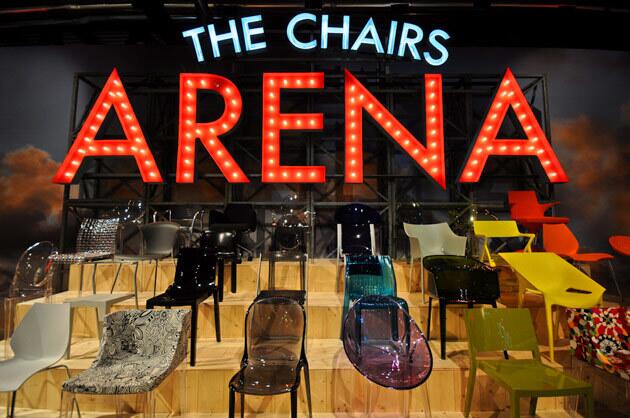
One segment of the Kartell booth simply showcased the array of chairs that have made the firm famous. (Franco Forci / For The Times)
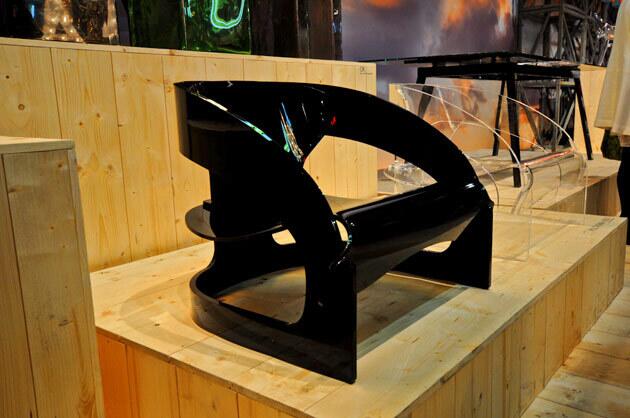
A Joe Colombo piece -- the only all-wood chair that Kartell ever produced – is being brought back in polycarbonate. (Franco Forci / For The Times)
Advertisement
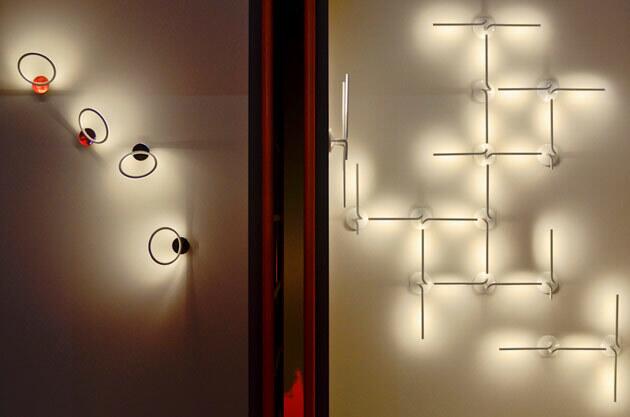
Flos dazzled the Milan crowd with a bevy of new pieces by top designers. Among the standouts was Ron Gilad’s La Linea Round, left, and La Linea Delta, right. The fixtures brought a little irreverence to the LED landscape and suggested that individual elements could be grouped in interesting ways. (Franco Forci / For The Times)
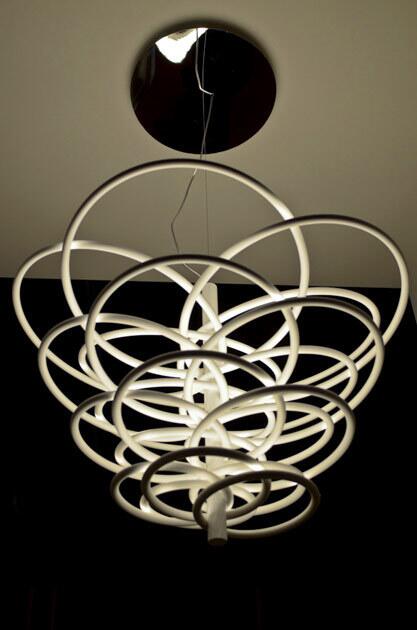
Designer Rod Gilad’s modern chandelier for Flos, named 2620 LEDs. (Franco Forci / For The Times)
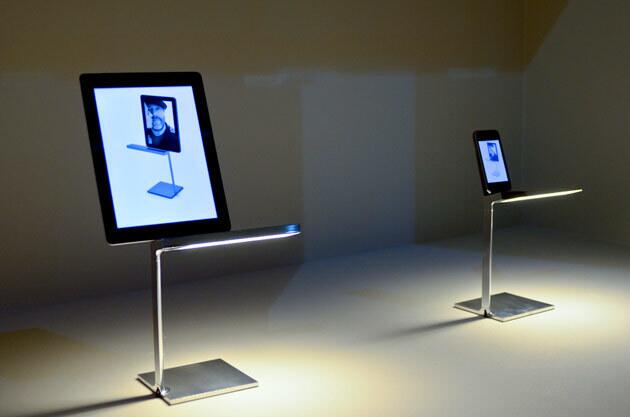
The Net table lamps, designed by Philippe Starck with Eugeni Quitllet for Flos, cleverly incorporated iPad or iPod docks above rows of LEDs. The result: While electronics recharge, they can serve as electronic picture frames or perhaps displays for streaming video. (Franco Forci / For The Times)
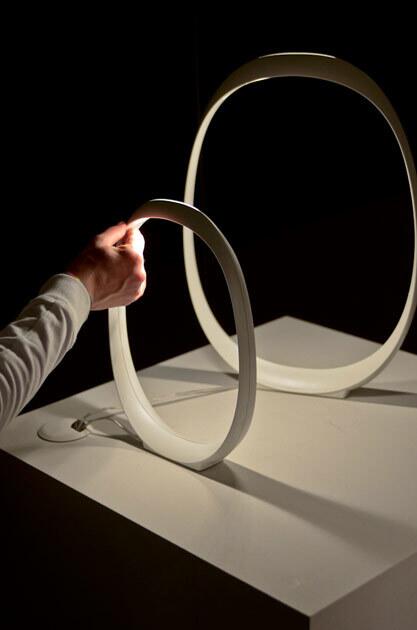
Foscarini’s standouts included Anisha, LED lamps in O shapes, pictured here in two sizes. When deployed in tandem, the two lamps can form concentric circles. (Franco Forci / For The Times)
Advertisement
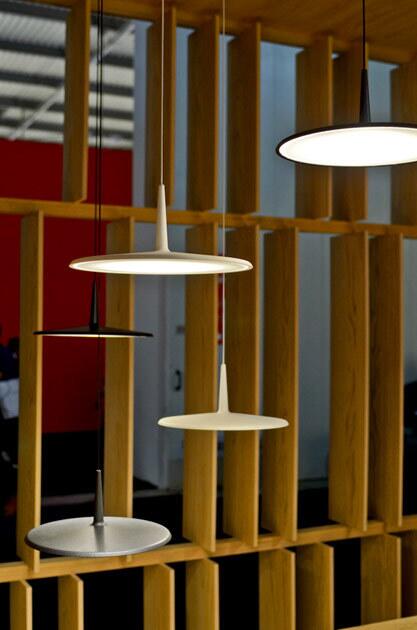
The name Vibia might not be familiar to most American audiences, but in Milan the company showcased a stunning array of lighting designs that hinted how LED technology may shape the fixtures of years to come. Pictured here: pendants with barely-there silhouettes. (Franco Forci / For The Times)
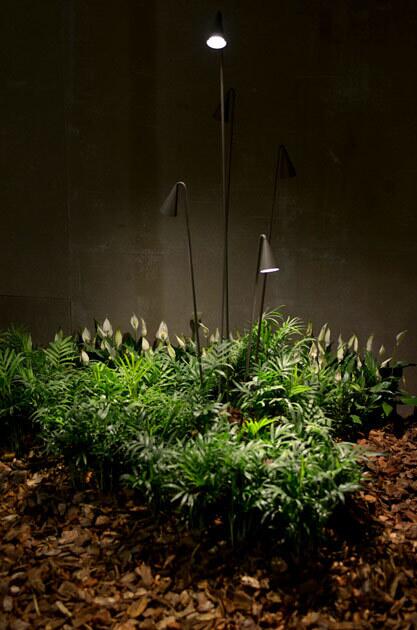
Also from Vibia: petite Brisa outdoor lights. (Franco Forci / For The Times)
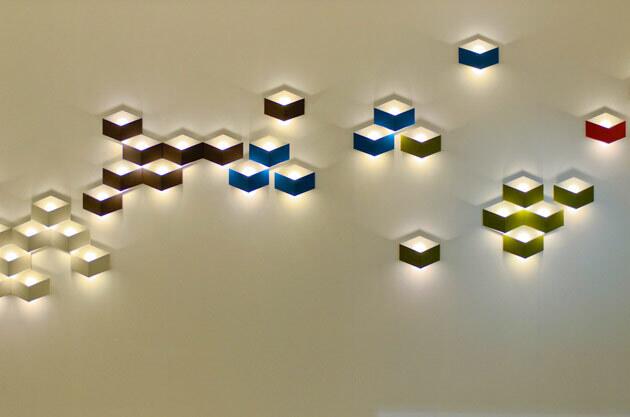
The Fold lights, designed by Arik Levy for Vibia, embodied several trends spotted in Milan: energy efficiency (with its use of LEDs), a folded-paper motif that echoes origami-like designs in furniture and accessories, and a modular approach that assumes consumers may want to use their own creativity in deciding how to arrange lots of little pieces into a larger whole. (Franco Forci / For The Times)
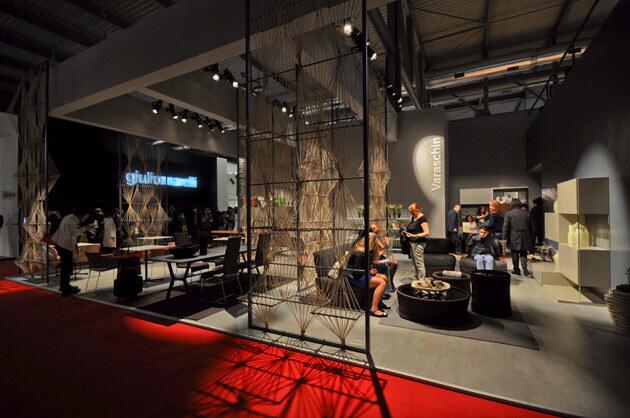
In the vast exhibit halls of the Salone Internazionale del Mobile, the booths sometimes are more interesting than the furniture. Veraschin’s installation included metal-framed room dividers woven with rope. The design separated spaces while preserving an open plan, and it cast interesting shadows to boot. (Franco Forci / For The Times)
Advertisement
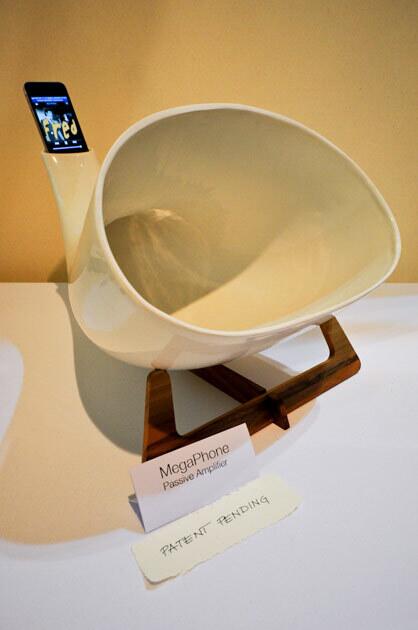
Enrico Bosa and Isabella Lovero, who design under the name En & Is, showed MegaPhone at the Salone Satellite area for emerging designers at the Milan furniture fair. As the name implies, the ceramic piece is an old-school, unplugged music amplifier for an iPhone or iPod. “It’s a digital Gramophone,” Bosa said, smiling as a Ferdinando Buscaglione tune crackled with a days-gone-by tone. Bosa said the piece, which includes a walnut base, will sell for 250 euros, about $360. (Franco Forci / For The Times)
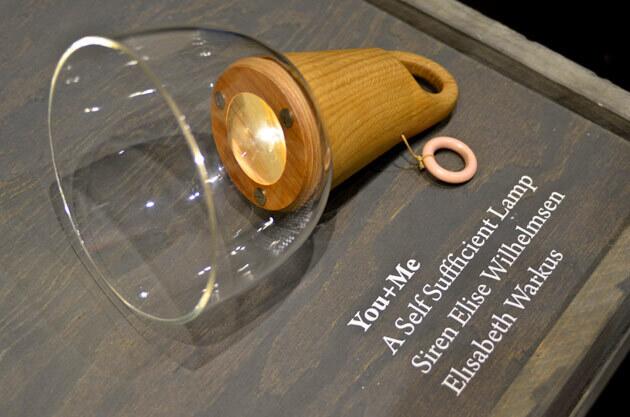
Also in the Salone Satellite area for emerging designers: Elisabeth Warkus’ clever LED lantern that operates off a manual wind-up mechanism instead of a plug. She said a minute of winding would illuminate the lamp for about 20 minutes. Though the fixture is portable, its handle fits nicely on a solid oak lantern stand that in itself looked interesting. (Franco Forci / For The Times)
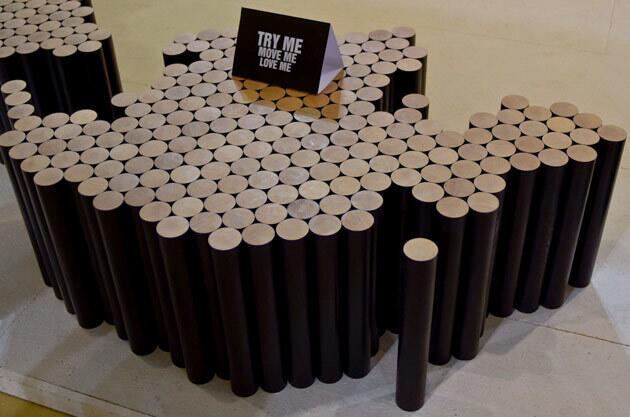
Also in the Salone Satellite area for emerging designers: Raphael Charles’ concept for a flexible coffee table composed of wooded cylinders. Each cylinder has a magnetized covering, so it will stick to other cylinders and ultimately form a flat, usable surface. (Franco Forci / For The Times)
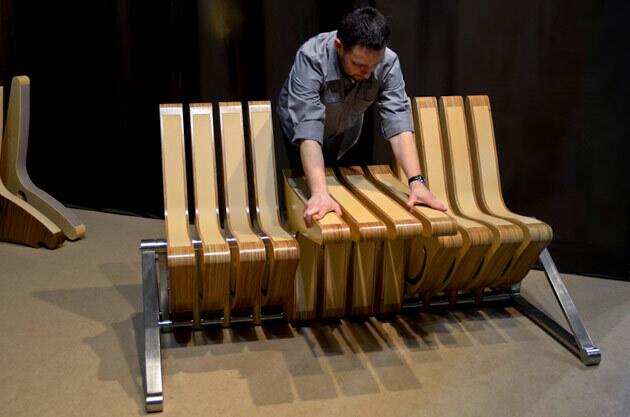
In the Salone Satellite area for emerging designers, Szymon Nawoj demonstrates the Coffee bench that he designed with Karolina Tylka. The bench’s sculpted pieces can be flipped to form side armrests or a center table — a place to set down your coffee. (Franco Forci / For The Times)
Advertisement
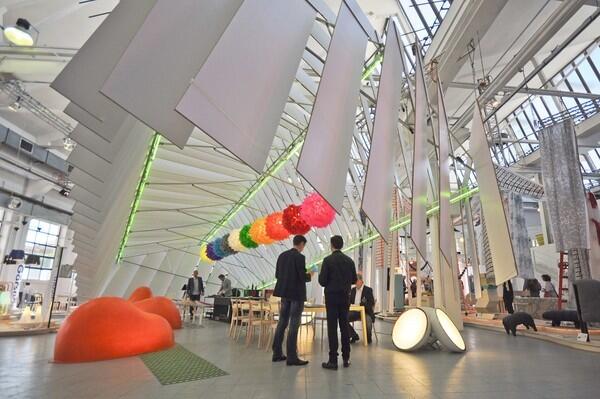
Salone Internazionale del Mobile, better known as the Milan furniture fair, is the main event but certainly not the only attraction during design week in this Italian city. Designers and manufacturers present their latest offerings in installations and events held across town. Here, a group of Swedish designers presented their work in one part of the Temporary Museum for New Design, staged every year in the fashionable Zona Tortona neighborhood. (Franco Forci / For The Times)
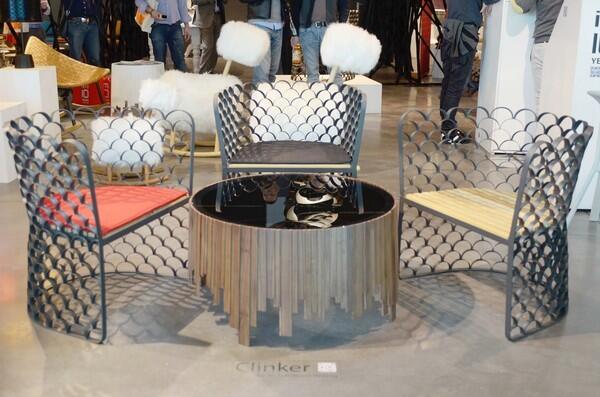
The Koi chair from the London-based firm Innermost was one of the pleasant surprises at Designjunction, a showcase of mostly British firms in Milan’s Zona Tortona neighborhood. Koi is something of a beautiful illusion: What at first looks to be stainless steel turns out to be thick wrought iron -- dozens of arcs welded by hand in a fish-scale pattern. Designer Jarrod Lim worked for two years in Patricia Urquiola’s studio before starting out on his own. He said the inspiration for Koi was the humble wrought iron gate design that was ubiquitous in Singapore, where he now lives. Those handcrafted iron pieces are being supplanted by machine-made aluminum gates, Lim said, so his intent is to revive the material, the design and the craft by translating the fish-scale pattern into outdoor furniture. (Franco Forci / For The Times)
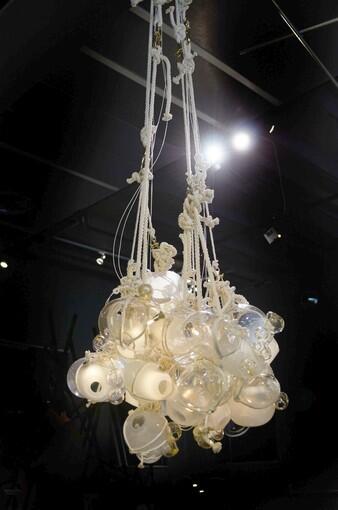
The Knotty Bubbles chandelier designed by Lindsey Adams Adelman for Roll & Hill. (Franco Forci / For The Times)
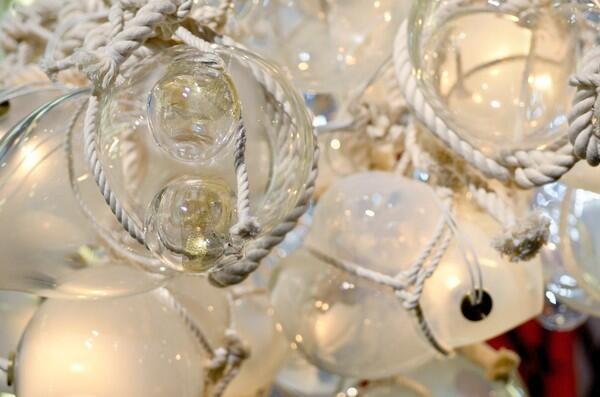
A closer look of the Knotty Bubbles chandelier. (Franco Forci / For The Times)
Advertisement
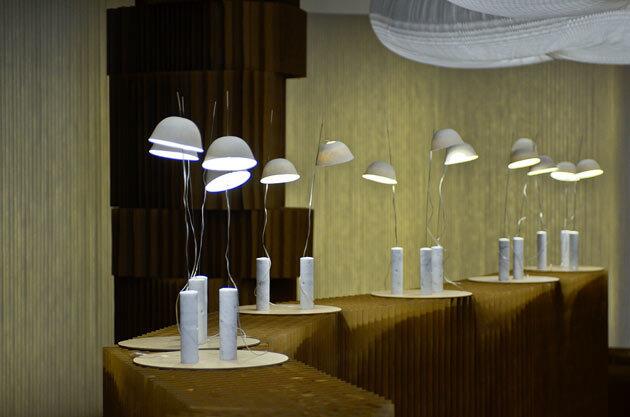
The little Capello lamp from Molo Design is rooted in a classic: The marble base is actually a remnant from the production of Achille Castiglioni and Pier Giacomo Castiglioni’s classic 1962 Arco floor lamp, a dramatic arc of steel that sits in a marble-block base. When the block is cored to fit the steel light pole, the resulting marble cylinders had previously been tossed away. (Franco Forci / For The Times)
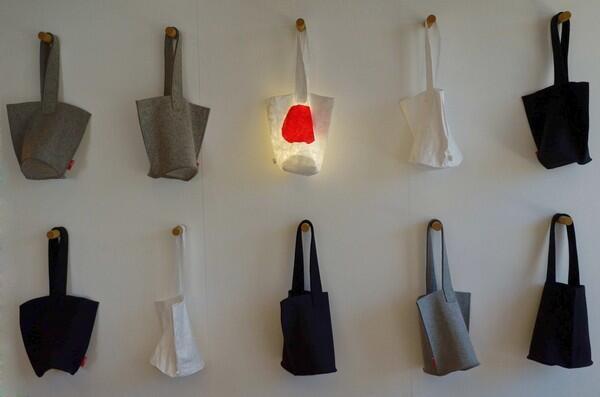
To mark Milan design week and to raise money for Japanese earthquake and tsunami relief, Molo Design created a special edition of its lighted Hobo handbag. A ring of LEDs illuminates the bag, which glows like rice paper and has a rising sun painted with red acrylic ink. (Franco Forci / For The Times)
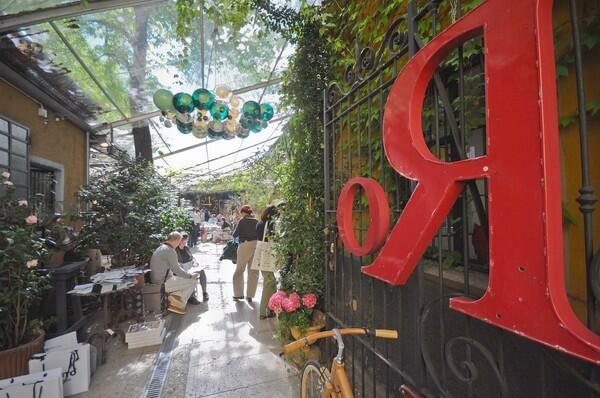
Spazio Rossana Orlandi, the most celebrated design store in Milan, gets crowded as design fans make their annual pilgrimage. This year about four dozen designers’ work is represented in Orlandi’s three-floor maze of gallery space and the courtyard. (Franco Forci / For The Times)
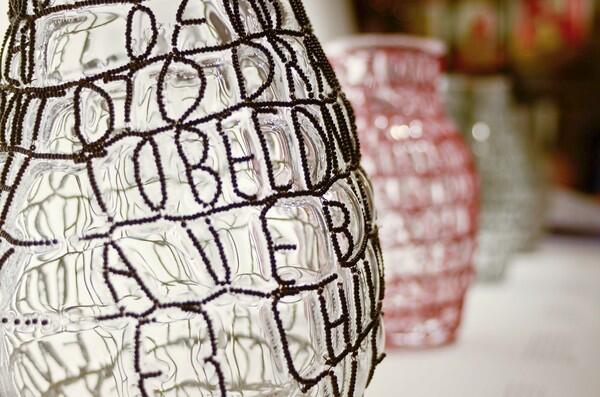
The Story vases at Spazio Rossana Orlandi in Milan are a project of the nonprofit Editions in Craft, the Swedish design studio Front and the Siyazama collective of South African women working in traditional bead craft. The designers of Front interviewed five Siyazama women, edited their personal stories and drew a template for how the letters could be laid out. The artisans then affixed the beads around a mold. After the beads were set, the mold was removed and glass was blown into the void, serving as a new backing to the beads and occasionally bulging through the lettering, creating an object that feels -- and is -- fully hand-crafted. Six vases were made as part of the collaboration, and each is priced at 1,440 euros, about $2,100, with the bulk of each sale going to the artisan who crafted it. (Franco Forci / For The Times)
Advertisement
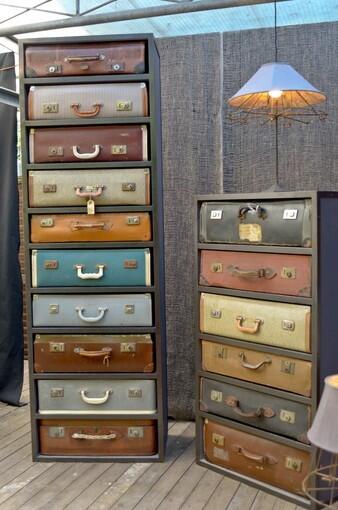
Chests of drawers made from old suitcases are the works of Hannah Plumb and James Russell, who work under the name Jamesplumb and were part of the Milan design week exhibition at Spazio Rossana Orlandi. (Franco Forci / For The Times)
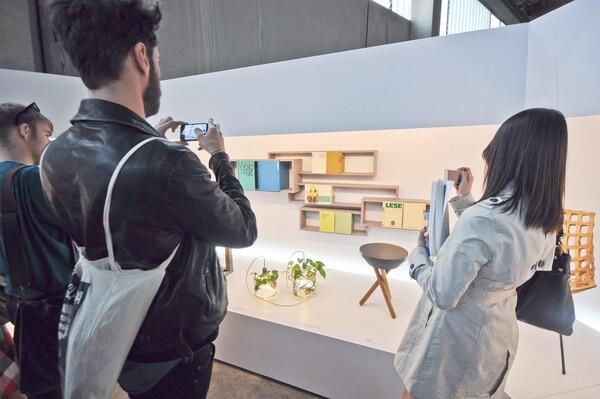
Visitors to Milan’s Ventura Lambrate design exhibitions in the Lambrate neighborhood snap away at a showcase of student work from Kunsthochschule Kassel in Germany. Ventura Lambrate has emerged as a place where companies have begun scouting for young talent. (Franco Forci / For The Times)
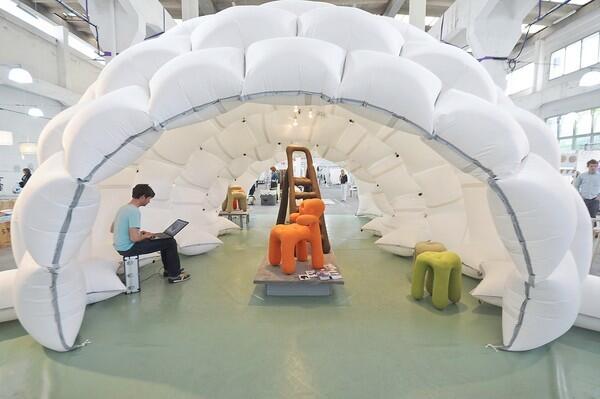
Lambert Kamps’ Fat Furniture collection is part of an exhibition called Designersblock, staged inside an old factory building in Milan’s Lambrate district. (Franco Forci / For The Times)
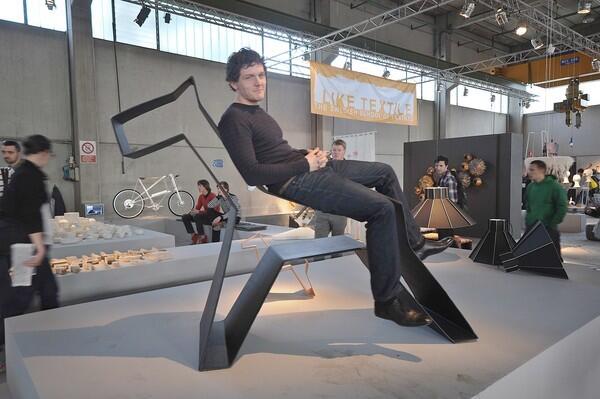
Fabian Von Spreckelsen, a German student at the Academy of Fine Art Maastricht in the Netherlands, reclines on what looks like sculpture but is actually a giant rocking horse. Quarter-inch-thick sheets of steel are wrapped in leather requiring about 5,000 stitches to create the silhouette, Von Spreckelsen said. When mounted, the piece actually does rock in a realistic riding fashion. The designer, part of a student exhibit in Milan’s Lambrate design district, said a representative from Louis Vuitton already has expressed interest in the piece. (Franco Forci / For The Times)
Advertisement
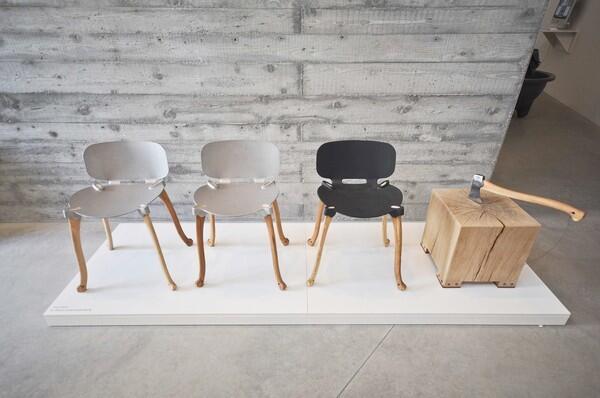
The Ventura Lambrate is an emerging design even in Milan’s Lambrate neighborhood. Students and other emerging designers can showcase their work, often in abandoned factories. Pictured here: the Axechair by Floris Schoonderbeek, who designed the seats so that the top of an ax handle peeks through at each corner, just as it does atop its namesake tool. (Franco Forci / For The Times)
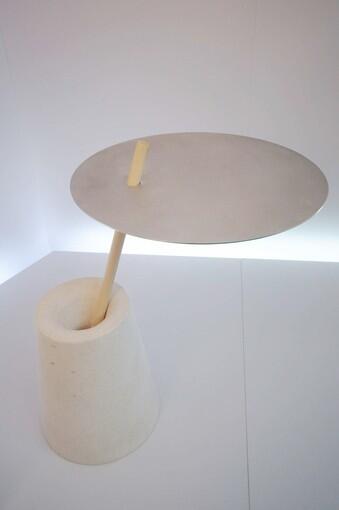
Leonie Aretz, a design student at Kunsthochschule Kassel in Germany, conceived a table anchored by a limestone base that weighs 42 kilos. The ash stick sits in an angled well inside the stone, allowing the aluminum table to pivot and move without moving the base.
Article: Why Milan matters
Article: Standouts and trends at the Milan furniture fair 2011
(Franco Forci / For The Times)


